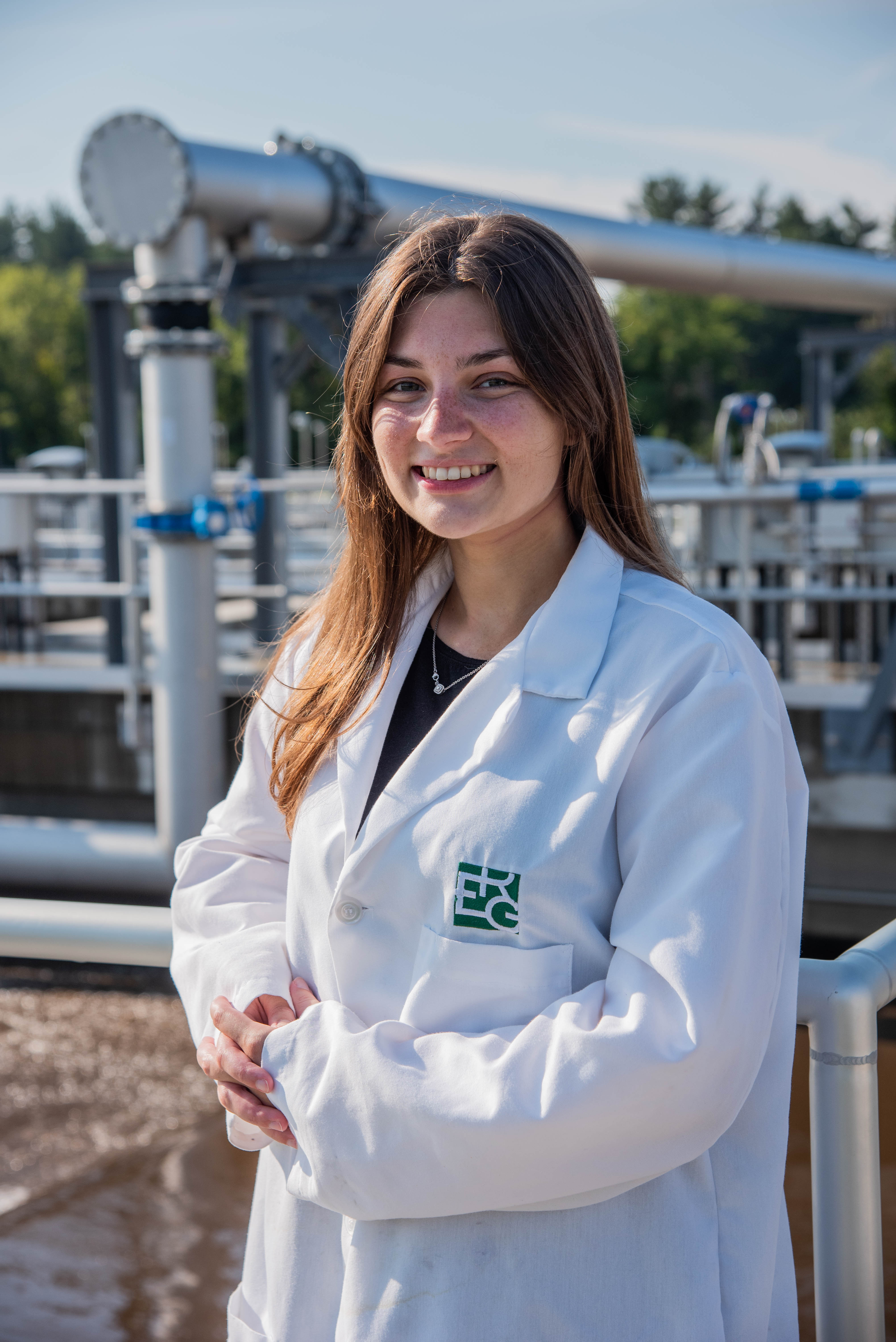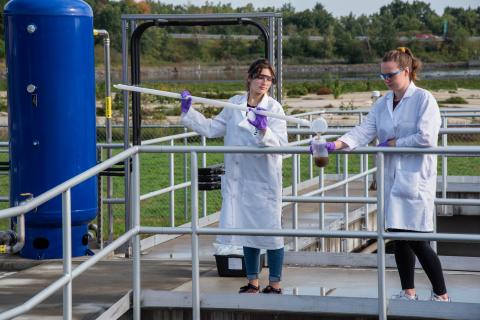UNH Grad Student Conducts Critical PFAS “Forever Chemicals” Research

With a passion for sustainability, at one of the most sustainable universities in the country, I have had the opportunity to participate in cutting edge research on contaminants of emerging concern that cycle through the environment and threaten public health.
Per- and polyfluoroalkyl substances (PFAS) are human-made compounds used in a variety of industrial and commercial products due to their beneficial properties of oil and water resistivity. Some common household products include non-stick cookware, rain jackets, dental floss, and countless others. While these compounds have improved our daily lives, they have been termed “forever chemicals” and do not degrade naturally in the environment. These toxic, carcinogenic substances have been linked to a variety of health implications but are difficult to remediate due to strong chemical bonds.
Wastewater treatment facilities protect public health by collecting waste from a variety of industrial, commercial, and residential sources. However, many existing treatment systems were not designed for the removal of low-level contaminants of emerging concern like PFAS. Therefore, PFAS entering wastewater treatment systems are not well removed and are released back into the environment in receiving water bodies or adhere to solids which contaminate soil if land applied for agricultural uses.

Cassidy and Alissa Reitter Civil Engineering ’21 collecting samples at a Wastewater Treatment Facility in the Great Bay Region.
From sampling at wastewater treatment facilities in the Great Bay region, to conducting lab experiments testing innovative advanced reduction processes, my research aims to better understand PFAS locally and contribute to the growing body of knowledge on PFAS treatment options. Much of the previous work on this topic experimented at extreme operating conditions that would be unrealistic to implement in a wastewater treatment facility. The need for more practical, effective treatment options is growing more pressing as PFAS regulations are being discussed and implemented across the globe.
Parallel to my research within the environmental engineering department, I’ve also been calculating the greenhouse gas emissions released by wastewater treatment facility processes. Recognizing the necessity of advanced treatment for PFAS while also assessing how these facilities contribute to climate change allows for a better understanding of the sustainability of wastewater treatment. With PFAS contamination and climate change both urgent and difficult problems, I’m grateful for the opportunity to conduct impactful research at UNH and share this knowledge with others.
For more information on PFAS, check out the Interstate Technology & Regulatory Council “PFAS Fact Sheets”
Additional information about this work:
https://www.unh.edu/unhtoday/2021/05/pfas-are-forever
https://www.unh.edu/unhtoday/2021/09/research-snapshot-protecting-great-bay
Photo credits: Tim Briggs
Cassidy has been part of UNH’s Changemaker Collaborative programming through participation in the summer Sustainability Fellowship and the B Impact Clinic.